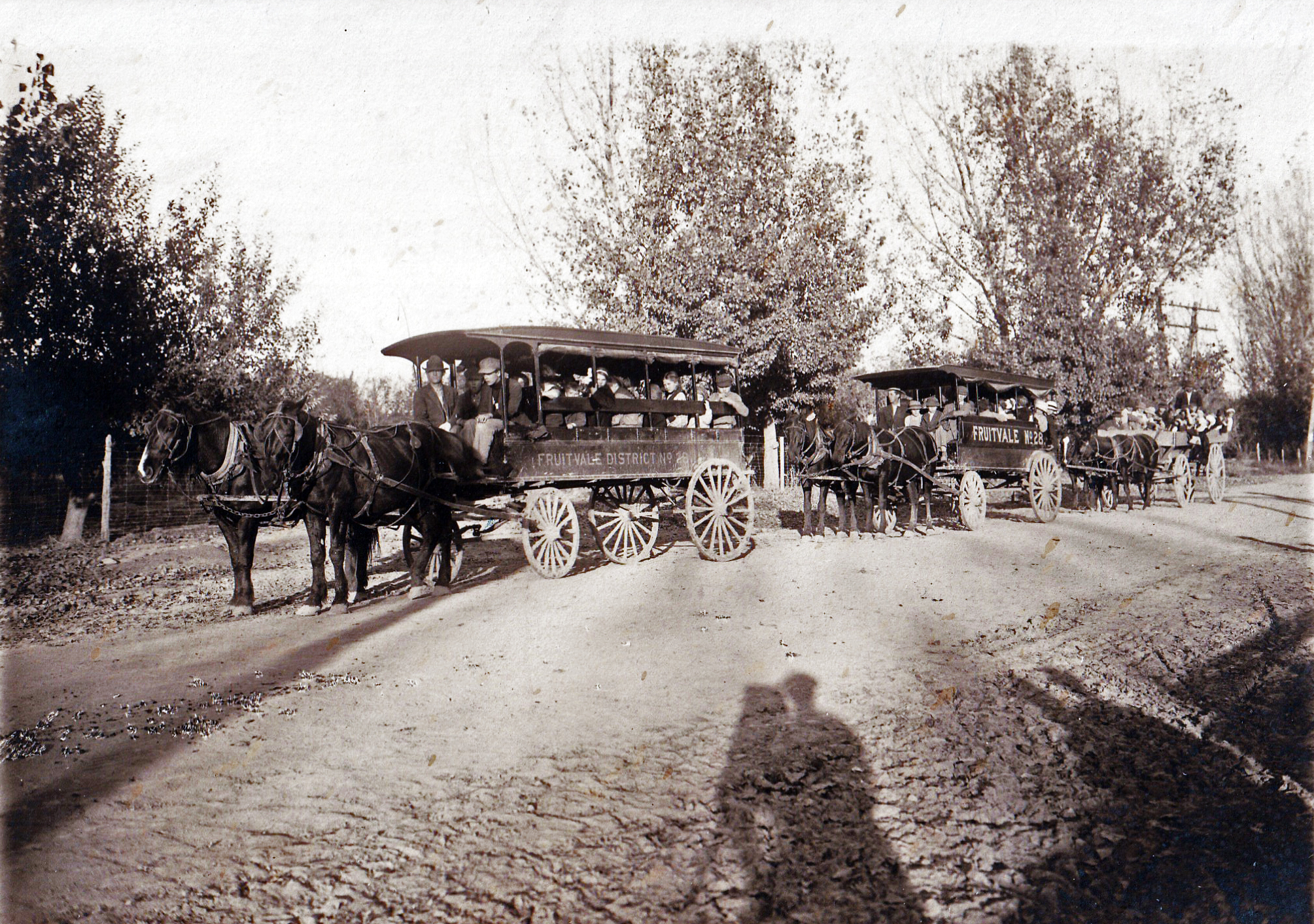Fruitvale is an unincorporated community located close to Grand Junction and now part of the Grand Junction Metropolitan Statistical area. Its name, and those of neighboring towns in the Grand Valley, such as Fruita and Appleton, speak to the region’s fruit farming.
Fruitvale School District 28 was founded in 1895. It saw construction of a one-room school in 1897, and the construction of a larger school house sometime between then and 1917. The district at some point established a senior high school, which may have been part of the larger school house referred to above.
The district appeared to have a strong, forward-looking commitment to practical education. A 1915 newspaper article reported that Fruitville High School was planning to have its own canning plant, cafeteria and milk testing department. The canning facility, which would cost approximately $1,000, would operate in the fall with the goal of supporting itself through the sale of its canned goods. For a small charge, the school’s domestic science students would make hot lunches for the students, with the goal of being self-supporting. Chemistry students would operate milk testing equipment and offer testing for area ranches and farms. Similarly, in 1917, Fruitvale and one other Colorado school were selected by the state to be the recipients of state funding whereby the state would match, dollar for dollar, the schools’ expenditures on experimental work performed in its home economics program. As reported in the Grand Junction Daily Sentinel, “selection of the Fruitvale school for this work is a high one and a distinct compliment to the school and the progressive teachers who have the work in charge.”
Horse-drawn carriages carrying school children were known as “kid hacks,” “hacks” being short for hackney carriages. These were capable of carrying approximately 20 children, which appears to be close to the number of riders in the first two carriages featured in the photo. Typically, the hacks would be loaded through the rear, so as not to scare the horses. Note the open wagon at the rear carrying children, which also appears to carry around 20 children. In the foreground you can see the shadow of the photographer and camera.
REFERENCES:
- “ADVANTAGE OF SCHOOL DISTRICT CONSOLIDATION,” The Weekly Courier (Ft. Collins), October 20, 1909, Colorado Historic Newspapers Collection at https://www.coloradohistoricnewspapers.org/?a=d&d=TWC19091020.2.26&srpos=1&e=——-en-20–1–img-txIN%7ctxCO%7ctxTA-fruitvale+school+district+28——-0——
- “BACKGROUND HISTORY OF CLIFTON-FRUITVALE,” Historic Places and Structures, from the Clifton-Fruitvale Community Plan Adopted October 19, 2006 (no hyperlink available)
- “Four New Schools for Mesa,” The Brush Tribune dated May 31, 1912, Colorado Historic Newspapers Collection at https://www.coloradohistoricnewspapers.org/?a=d&d=BRT19120531-01.2.29&srpos=13&e=–1900—1920–en-20–1–img-txIN%7ctxCO%7ctxTA-fruitvale+school+——-0——
- “Fruitvale, Colorado,” www.wikipedia.org at https://en.wikipedia.org/wiki/Fruitvale,_Colorado .
- “Fruitvale Honored,” The Daily Sentinel (Grand Junction), dated November 1, 1917, www.newspapers.com at https://www.newspapers.com/image/535895697/?terms=fruitvale%20school%20government&match=1
- “Fruitvale High School a Unique Institution,” The Aspen Democrat-Times, January 22, 1915, Colorado Historic Newspapers Collection at https://www.coloradohistoricnewspapers.org/?a=d&d=ADS19150122.2.9&srpos=28&e=–1900—1920–en-20–21–img-txIN%7ctxCO%7ctxTA-fruitvale+school+——-0——
- “Fruitvale School District 28 (Mesa County, Colorado),“ at Colorado Historic Newspapers Collection at https://mesa.marmot.org/Archive/organization:1269/Organization
- “Grand Valley (Colorado-Utah),” www.wikipedia.org at https://en.wikipedia.org/wiki/Grand_Valley_(Colorado-Utah)
- “Short History of the Yellow School Bus,” autoevolution at https://www.autoevolution.com/news/short-history-of-the-yellow-school-bus-128622.html


I love this picture. Really makes sense to have the kids enter at the back! I also like the exquisite profile of the photographer and his camera. Great stuff, Jack. Keep it coming!
Thank you, Jim!